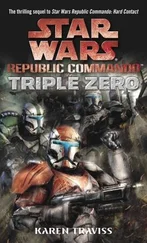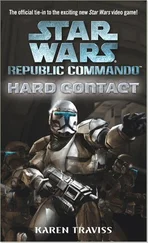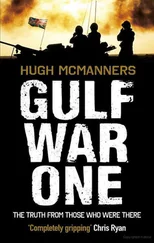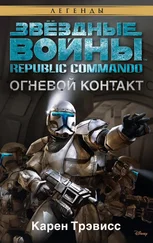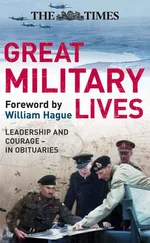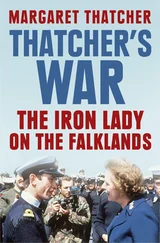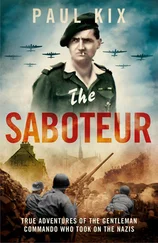Hugh McManners - Falklands Commando
Здесь есть возможность читать онлайн «Hugh McManners - Falklands Commando» весь текст электронной книги совершенно бесплатно (целиком полную версию без сокращений). В некоторых случаях можно слушать аудио, скачать через торрент в формате fb2 и присутствует краткое содержание. Город: London, Год выпуска: 2014, ISBN: 2014, Издательство: Nightstrike Publishing, Жанр: nonf_military, Биографии и Мемуары, на английском языке. Описание произведения, (предисловие) а так же отзывы посетителей доступны на портале библиотеки ЛибКат.
- Название:Falklands Commando
- Автор:
- Издательство:Nightstrike Publishing
- Жанр:
- Год:2014
- Город:London
- ISBN:978-0-992-81540-0
- Рейтинг книги:4 / 5. Голосов: 1
-
Избранное:Добавить в избранное
- Отзывы:
-
Ваша оценка:
- 80
- 1
- 2
- 3
- 4
- 5
Falklands Commando: краткое содержание, описание и аннотация
Предлагаем к чтению аннотацию, описание, краткое содержание или предисловие (зависит от того, что написал сам автор книги «Falklands Commando»). Если вы не нашли необходимую информацию о книге — напишите в комментариях, мы постараемся отыскать её.
Falklands Commando — читать онлайн бесплатно полную книгу (весь текст) целиком
Ниже представлен текст книги, разбитый по страницам. Система сохранения места последней прочитанной страницы, позволяет с удобством читать онлайн бесплатно книгу «Falklands Commando», без необходимости каждый раз заново искать на чём Вы остановились. Поставьте закладку, и сможете в любой момент перейти на страницу, на которой закончили чтение.
Интервал:
Закладка:
The SBS in 1982 was one squadron strong [3]and so was known as ‘the Squadron.’ (The SAS were considerably larger.) Their role demands that they operate in four-man teams and rarely in larger groups. The SAS operate in anything from four-man teams, up to squadron strength.
The SBS’ speciality is the sea and its immediate hinterland, and they are the experts in covert and clandestine amphibious operations, having pioneered this field since the days of the ‘Cockleshell Heroes’ of the last war. Their motto, ‘Strength through Guile’ describes their unique approach, which is based upon what a four-man team can do with explosives, automatic weapons and brainpower. To this, we added our tactical knowledge, experience and technical expertise, plus the 4.5-inch guns of the Royal Navy, the 105-mm Light Guns of the Royal Artillery and the various munitions of the Harrier ground attack aircraft. We also brought a war-fighting perspective that despite all our training together SBS didn’t yet quite understand. But very soon they would…
My Orders said to prepare for special operations lasting three days, taking all our radios and ‘light scales’ (i.e. no sleeping-bags or shelters but as much ammunition as we could carry without becoming too ponderous to fight). This meant that we would not be doing our normal covert-surveillance job, but probably taking part of a raid.
But first, 148 Battery needed to have a last get-together on Fearless. This was most likely to be the last time we’d come together again until it was all over. We needed to talk through our procedures, and decide exactly how we would operate for the rest of the campaign.
Since we’d last been all together in Poole six weeks earlier, the world had changed radically. We’d been at sea. For others the strange period of preparation and waiting in Poole had been extended, punctuated as in our experience, by a continuation of hilarious ‘last’ nights in pubs and wine bars. They’d then flown by VC10 flight to Ascension, then embarkated into various ships.
Two 148 Battery teams, led by captains Willie McCracken and Chris Brown, had played a key part in the recapture of South Georgia. They’d directed the naval gunfire with great accuracy to frighten but not kill the Argentine garrison, causing them to surrender.
After South Georgia, these teams had been joined by two more teams. They’d already begun a programme of naval bombardment of Port Stanley using gunships from Admiral Woodward’s carrier force. This went under the overall code name of ‘Operation Paraquet’. And now, despite our early start, we were the last to arrive in the area of actual operations.
The gunnery dimension to this was organized by Lieutenant-Colonel Keith Eve, the Royal Artillery Liaison Officer Naval Gunfire Support (RALONGS). From his constant moving about the fleet from gunship to gunship, and with the Admirals’ staff on Hermes, Keith Eve had become quite well-known.
Some of the naval officers I spoke with seemed to think he was rather mad, maybe due to his enthusiasm for the task. But the more likely explanation was that they hadn’t yet understood the huge amounts of ammunition they’d be firing – far more than they were used to from peacetime exercising. The Port Stanley bombardments were taking place in daylight and the ships going in to Port Stanley had been attacked. This for them was highly unusual. The presence of Keith on board – and 148 Battery generally, put them at a much higher level of action and risk, so their initial uncertainty over our highly experienced, cordite-tinged colonel was understandable.
Nick Allin and I were summoned to Fearless on 18 May for Orders and a detailed communications brief. All the FO teams were to be there, so I decided to take Des, Tim and Steve in the helicopter as well, so they could catch up on the adventures of their mates.
We were delighted to see the others again, news eagerly exchanged. Colonel Keith Eve told of his lucky escape in an attack by Mirage jets when two bombs went through the side of the ship – the first of several incorrectly fused bombs that failed to explode. He’d even managed to take photos, demonstrating either a lack of imagination, or a lot of nerve.
Captain Bob Harmes also re-appeared, larger than life and very noisy. From the frustration he’d suffered through inactivity on Canberra , Bob had started an additional and involuntary career as a naval fire fighter, in the first of several ships that he was to be on when they were bombed.
Bob’s job was as one our invaluable liaison officers, in the ops rooms of gunships while we were ashore firing them. He had yet to have the first of his three shipwrecks, which led to his becoming the official ‘Jonah of the Fleet’, feared by captains and ship’s companies alike.
The other four NGFO’s, Captains Kevin Arnold, Chris Brown, Nigel Bedford and Willie McCracken, were shuttling from ship to ship keeping the bombardment of Port Stanley going. Whereas the RAF’s Black Buck Vulcan bomber raids had put just two iron bombs onto the Stanley runway, our NGS (Naval Gunfire Support) was doing serious damage, as the next step up in the ladder in our escalation of military response.
Willie’s team however were missing from this gathering. They’d already landed in the Falklands, near to the proposed landing area, having motored ashore a few nights earlier as part of the Special Forces surveillance programme.
For the daylight bombardments of Port Stanley, the gunships were leaving the main Hermes carrier group and steaming south to a gunline that was only a few miles east of the airfield. Eventually, the threat of land-based Exocet missiles made daylight bombardments too risky. But until then, the ship’s helicopters were being launched with an NGFO strapped into the co-pilot’s seat. He would order the targets and adjust them, bobbing up, often from the cover of hills when the shells were due to land, watching for the smoke of detonation then making adjustments.
The first time they did this, Chris Brown was the NGFO in a Lynx helicopter from HMS Alacrity (a Type 21 gunship). He’d persuaded the pilots, Bob Burrows and Rob Sleeman, to remove their anti-ship missiles and mount two GPMGs (General Purpose Machine Guns) in the rear, one pointing out of each side door. Chris manned one and the ‘Schoolie’ ( Alacrity’s Royal Naval school teacher), who’d been for a time in 41 Commando, manned the other. This ‘terrifying’ duo were to terrify themselves!
They took off from HMS Alacrity , south of Port Stanley and flew in a wide loop north, well clear of Cape Pembroke and the airfield. Once over Berkeley Sound they came in over Kidney Island in order to land on high ground east of Mount Low, where Chris intended to shell Stanley using Alacrity ’s gun. But spotting a fishing boat with soldiers on board flying a blue-and-white flag, they swooped down on it with both machine-guns blazing.
The anti-ship missiles Chris had rejected would have been ideal for this target. After one pass they circled round behind Kidney Island. But rather foolishly they made a second run, at the same time as a fast patrol boat emerged into the bay with its cannons firing.
Some eight bullets hit the helicopter, but no one was hurt and nothing apparently damaged. The pilots were unaware they’d been hit at all, and did not see the shattered hole in the windscreen a few inches to the right of the first pilot’s head. In the back Chris shouted to the Schoolie that on no account was this bad news to be shared.
They landed on a spur east of Mount Low, and fulfilling his self-admitted desire to be the first member of the Task Force to set foot on the Falklands Chris leapt out, only to discover fuel leaking from a bullet hole in their helicopters’ tank. They took off immediately, radio’ing they’d been hit.
Читать дальшеИнтервал:
Закладка:
Похожие книги на «Falklands Commando»
Представляем Вашему вниманию похожие книги на «Falklands Commando» списком для выбора. Мы отобрали схожую по названию и смыслу литературу в надежде предоставить читателям больше вариантов отыскать новые, интересные, ещё непрочитанные произведения.
Обсуждение, отзывы о книге «Falklands Commando» и просто собственные мнения читателей. Оставьте ваши комментарии, напишите, что Вы думаете о произведении, его смысле или главных героях. Укажите что конкретно понравилось, а что нет, и почему Вы так считаете.

